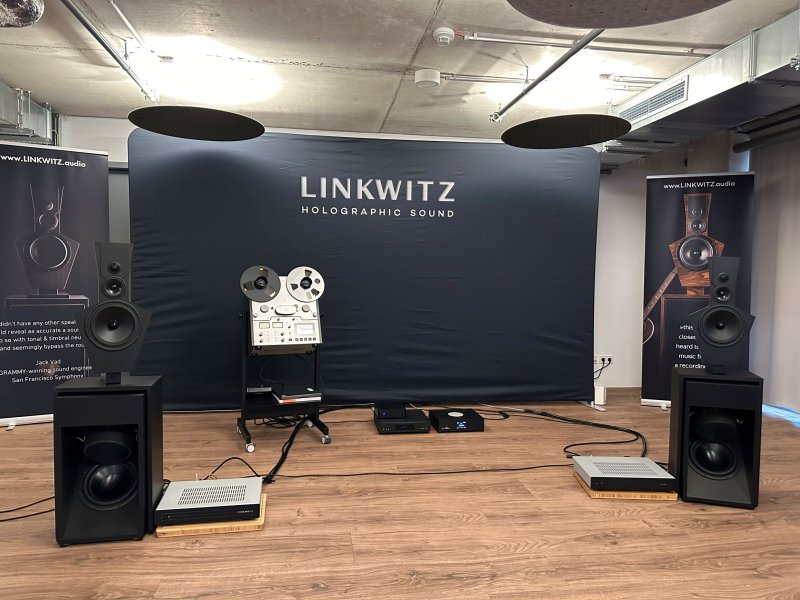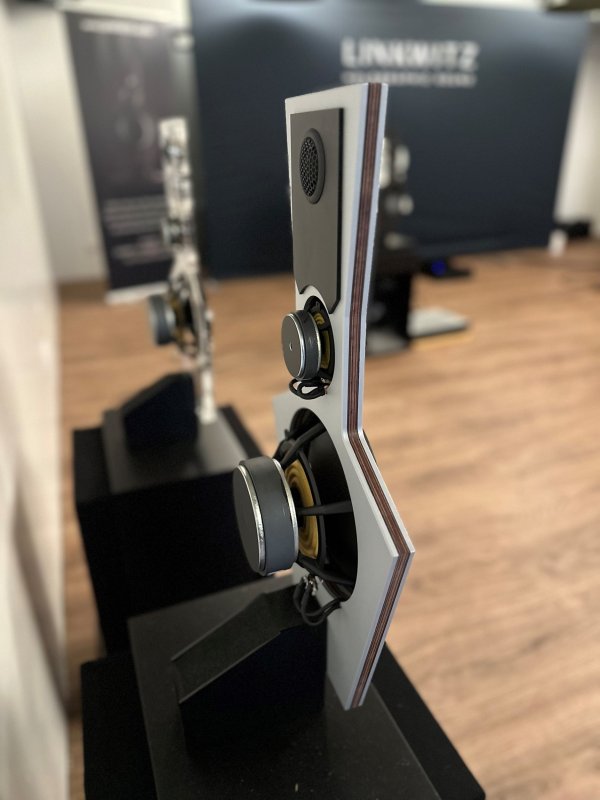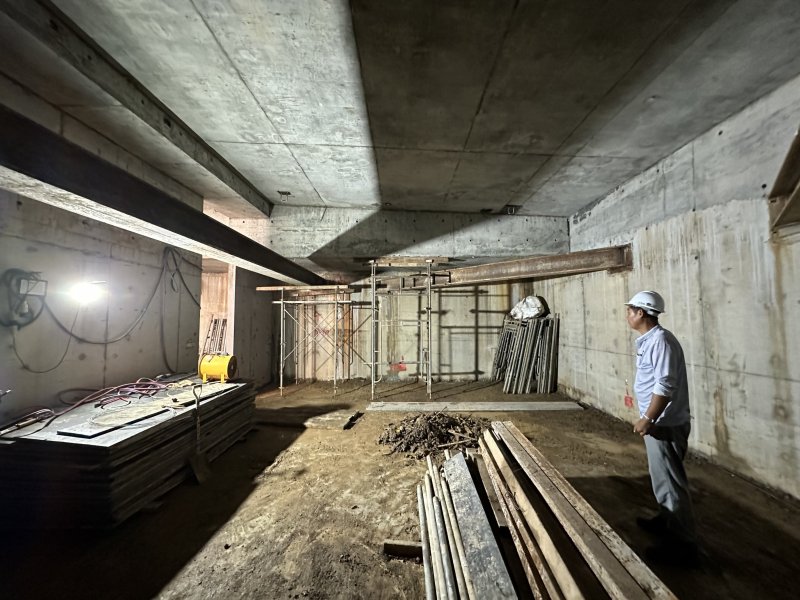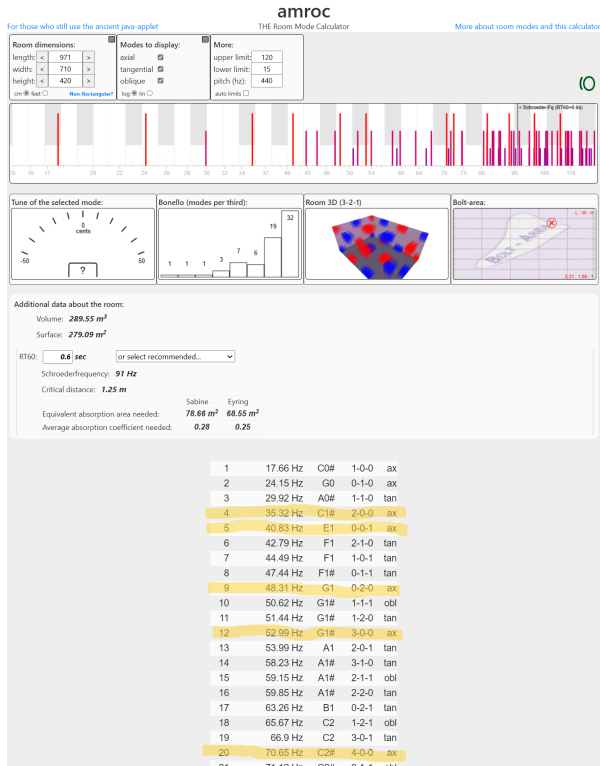The Linkwitz LX521.4 system was outstanding - no - astonishing! The digital source was in plain-old CD resolution, streamed via an integrated streamer/DAC with no fancy ancillary cables or other equipment. I can expect that with a statement streamer like the Aurender N30 or Taiko Extreme with the newest (and greatest) DAC from MSB, the Cascade, the performance will be even more delicious.
It was pure serendipity that I was able to stumble upon the demo room by chance during the last hours on the last day of Munich Show off the beaten path inside the adjacent Automobile Museum venue. I was grinning ear-to-ear when I heard the system which discretely and effortlessly fleshed out the individual and collective molecules of any/all performances in the correct natural spectral balance and 3D micro/macro dimensions/positions within the expansive soundstage. Music's able to climb, expand, explode, jump, juxtapose, punch, shrink, seduce, shimmer, and throb "behind that", "down there", "here", "over there", "way back there", "up there" dynamically and simultaneously within the spatially accurate, rich and organic 3D soundstage.
I find that this closely-spaced vertical array of dynamic drivers to be superior to full-height ribbons/planars in dynamically reproducing pin-point locations and sizes of discrete sonic events inside the soundstage. To me, the latter designs (Alsyvox, Magnepan, Martin Logan) are unable to persuasively layer, position or scale the height of sonic events from ping- pong-ball-sized orbs/spheres to symphonic-hall-sized (and everything in between) orb/spheres, but instead portray them as being strangely flat and mostly too tall (but ironically too short at the same time), locked into a uniformly unnatural horizontal which does not vary with listening position height.
While many may find a floor-to-ceiling soundstage height to be exciting, this mostly "full height" presentation is unnatural, equating to the The inability to scale the sonic event's relative "height" within the soundstage. Likely, I'm super sensitive to phase and subtle timing differences between a flat planar (ribbon and line arrays), curved planar (Martin Logan), and spherical (dynamic driver) wave launches of the direct and subsequently the indirect/reflected soundwaves.
At less than US$30k for the pair (including the active amplifiers with the analog crossovers) it's the ideal system to own even if there were no financial constraints for the purchase of monoblock amplifiers + statement loudspeakers as an "upgrade" a few years later if/when the market for US$250k+ loudspeakers (combined, US$350k+ with monoblock amps) experience a downward correction.


It was pure serendipity that I was able to stumble upon the demo room by chance during the last hours on the last day of Munich Show off the beaten path inside the adjacent Automobile Museum venue. I was grinning ear-to-ear when I heard the system which discretely and effortlessly fleshed out the individual and collective molecules of any/all performances in the correct natural spectral balance and 3D micro/macro dimensions/positions within the expansive soundstage. Music's able to climb, expand, explode, jump, juxtapose, punch, shrink, seduce, shimmer, and throb "behind that", "down there", "here", "over there", "way back there", "up there" dynamically and simultaneously within the spatially accurate, rich and organic 3D soundstage.
I find that this closely-spaced vertical array of dynamic drivers to be superior to full-height ribbons/planars in dynamically reproducing pin-point locations and sizes of discrete sonic events inside the soundstage. To me, the latter designs (Alsyvox, Magnepan, Martin Logan) are unable to persuasively layer, position or scale the height of sonic events from ping- pong-ball-sized orbs/spheres to symphonic-hall-sized (and everything in between) orb/spheres, but instead portray them as being strangely flat and mostly too tall (but ironically too short at the same time), locked into a uniformly unnatural horizontal which does not vary with listening position height.
While many may find a floor-to-ceiling soundstage height to be exciting, this mostly "full height" presentation is unnatural, equating to the The inability to scale the sonic event's relative "height" within the soundstage. Likely, I'm super sensitive to phase and subtle timing differences between a flat planar (ribbon and line arrays), curved planar (Martin Logan), and spherical (dynamic driver) wave launches of the direct and subsequently the indirect/reflected soundwaves.
At less than US$30k for the pair (including the active amplifiers with the analog crossovers) it's the ideal system to own even if there were no financial constraints for the purchase of monoblock amplifiers + statement loudspeakers as an "upgrade" a few years later if/when the market for US$250k+ loudspeakers (combined, US$350k+ with monoblock amps) experience a downward correction.


Last edited:










